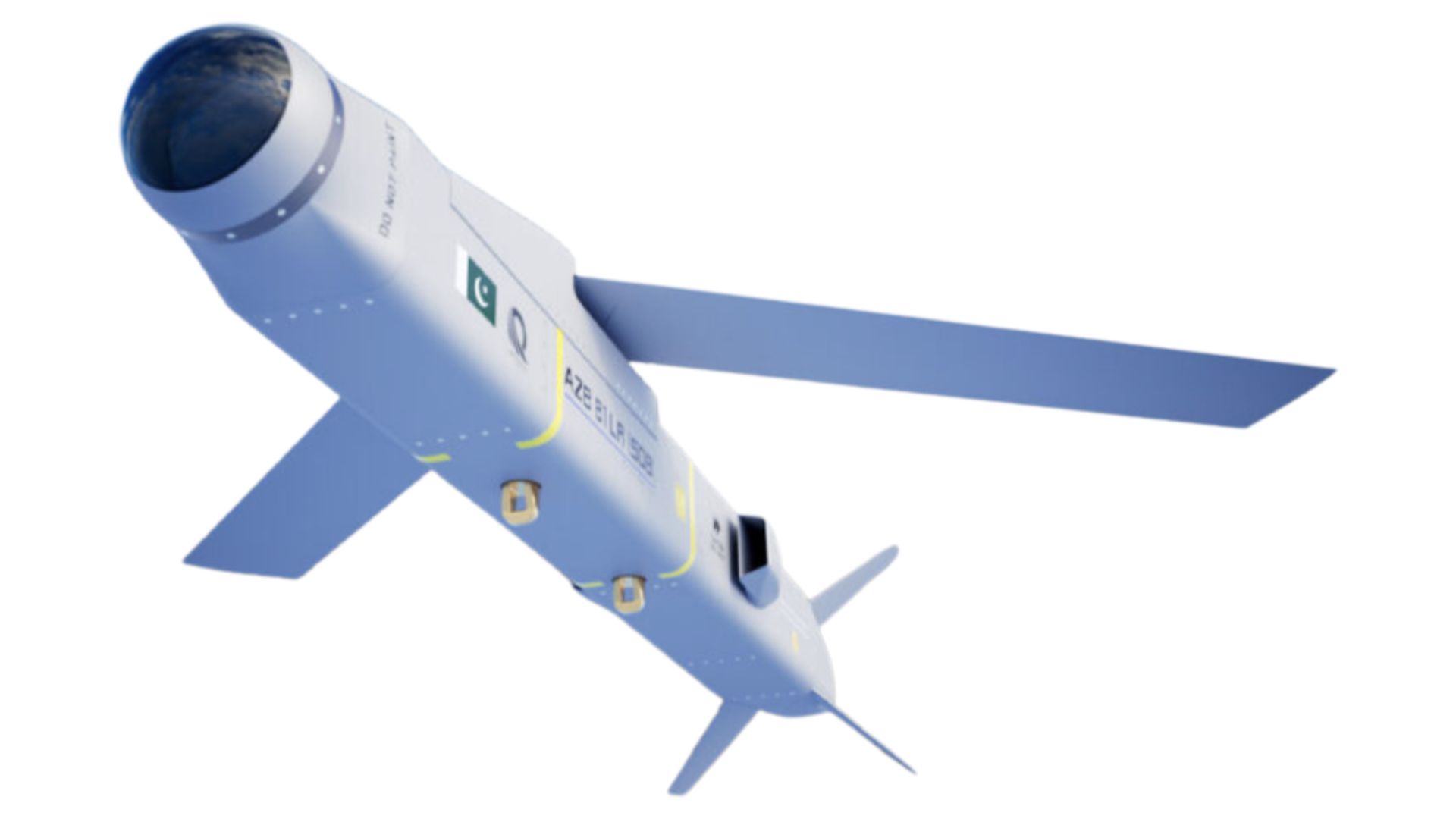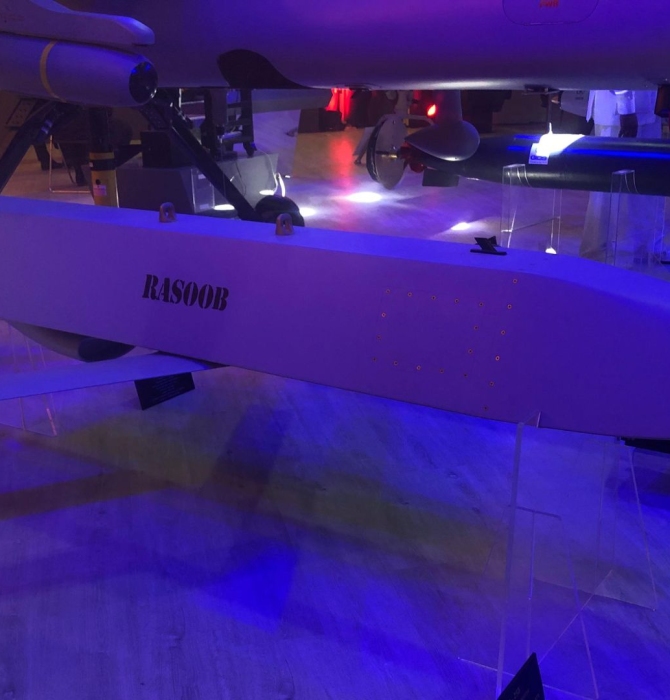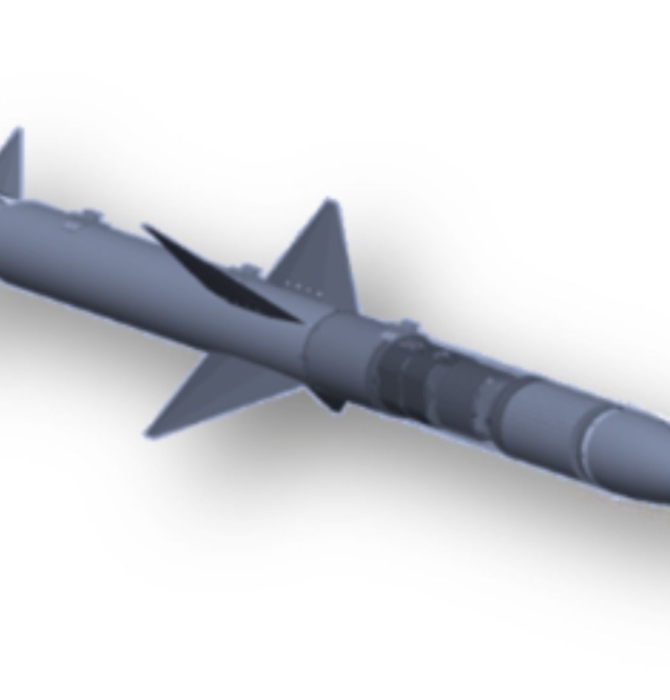6645Views

Qaswa Industries AZB-81LR Small Diameter Bomb (SDB)
The Qaswa Industries AZB-81LR Small Diameter Bomb (SDB) is a stand-off weapon (SOW) with a range of 200 km. It was first revealed at the 2024 International Defence Exhibition and Seminar (IDEAS 2024).
The AZB-81LR is part of a wider family of precision-guided SOWs under the ‘AZB’ designation, which, up to this point, consisted solely of ‘Range Extension Kits’ (REK). The REK is a configurable kit that converts Mk.80-series general purpose bombs (GPB) into gliding precision-guided bombs (PGB).
Currently, the most common application of the AZB/REK is the Mk.83, transforming the latter into the AZB-83. The Pakistan Air Force (PAF) uses the AZB-83 from its JF-17 Thunder and Mirage III/5 fighters as well as the Bayraktar Akıncı high-altitude long-endurance (HALE) unmanned aerial vehicle (UAV).
From a design standpoint, the AZB-81LR likely consists of a Mk.81 (119 kg) GPB encased in a specially designed airframe. This frame uses a combination of a gliding system and miniature turbojet powerplant, giving the AZB-81LR considerable range. Its guidance stack likely combines a global navigation satellite system (GNSS) with an imaging infrared (IIR) seeker.
Qaswa Industries also emphasizes that it designed the AZB-81LR by using “fifth-generation technologies”, likely referring to low observability (LO) on radar or reduced radar cross-section (RCS).
AZB-81LR Specifications
- Range
- High-Altitude: 200+ km
- Low-Altitude: 120 km
- Seeker: IIR
- Accuracy: 3 m CEP
- Powerplant: Undisclosed turbojet (possibly a NESCOM or SoluNox engine)
- Length: TBD
- Width: TBD
- Weight: TBD
Key Capabilities of the AZB-81LR
Looking at the aesthetic design of the AZB-81LR, observers may draw parallels with the European MBDA Select PRecision Effects at Range (SPEAR) platform, especially SPEAR-3. This may not be coincidental as Pakistan could be seeking to emulate the capabilities of the SPEAR-3 via the AZB-81LR.
Compatible With Many Platforms
Thanks to its compact and lightweight design, the AZB-81LR can be deployed from a variety of aerial platforms, including UAVs and crewed fighter aircraft. In fact, in an interview with local news, a Qaswa Industries representative said that a fighter could carry 8-16 munitions, while a UAV could take on 6-8 units.
One can also assume that the compact size allows for deployment from internal weapons bays, which will be important in the future as the PAF seeks a next-generation fighter aircraft (NGFA).
Autonomous Operations
While providing a range of 200 km, Qaswa Industries also focused on making sure that such range was also practically usable. To facilitate this capability, it incorporated automatic target recognition so that the AZB-81LR could operate autonomously, which would be key in a dense electronic warfare (EW) situation where there is communications jamming against data-links or GNSS, for example.
Likewise, Qaswa Industries also stated that the AZB-81LR will be able to function in a network-enabled warfare system, including swarming manoeuvres. For example, a company representative provided an example where four to six AZB-81LRs can be launched at once and will communicate with each other.
Moreover, the munitions will autonomously determine which targets to engage. The company confirmed that it is using artificial intelligence and machine learning (AI/ML) to achieve these capabilities.
Focused on Accuracy
In line with a wider industry shift towards lightweight munitions, it seems Qaswa Industries is looking to make the AZB-81LR lean more on accuracy than explosive-yield.
One of the stated benefits of the AZB-81LR is that it will rely on precision targeting to strike targets while (thanks to its small warhead) help minimize collateral damage.
However, another aspect of leveraging better accuracy is that it also allows for a smaller munition, one a platform can load in larger numbers so as to have more opportunities to attack, be it against one target or against a larger assortment of targets.
News Updates, Comments, and Analysis
Qaswa Industries says the AZB-81LR was developed indigenously and that the munition could materialize in “a few years.” It did not provide a clearer timeline, but one can expect it to correspond to the late 2020s, around the time the PAF will likely start the process of inducting a NGFA.
While a small munition, the AZB-81LR could be among the Pakistani defence industry’s most important developmental systems. Based on the information provided by Qaswa Industries, the AZB-81LR will use LO design principles for its airframe and AI/ML in its targeting stack.
Succeeding in these areas would allow Qaswa Industries to extend the materials and technologies used in the AZB-81LR to other munition applications. In turn, Pakistan’s munitions portfolio could evolve relatively significantly in the coming years, leading to more sophisticated loitering munitions, more precise versions of existing cruise missile designs, and other new munition types, like jamming decoys.
Like the Global Industrial Defence Solutions (GIDS) Rasoob 250, the development of the AZB-81LR could also reflect the PAF’s long-term vision of how it wants to shape its strike capabilities. It seems that there is a growing emphasis on compact SOWs that could, potentially, be launched from within internal bays.


